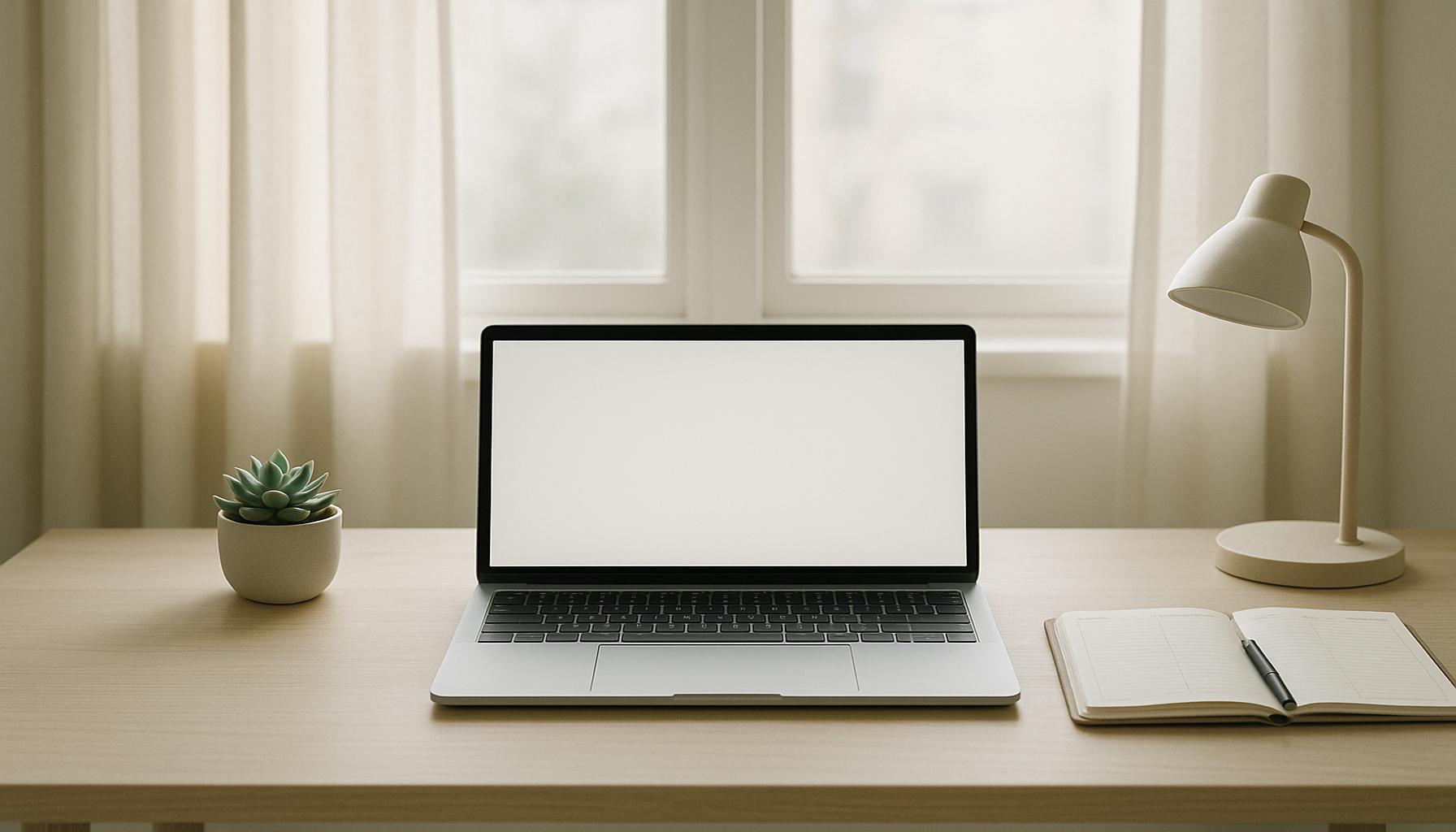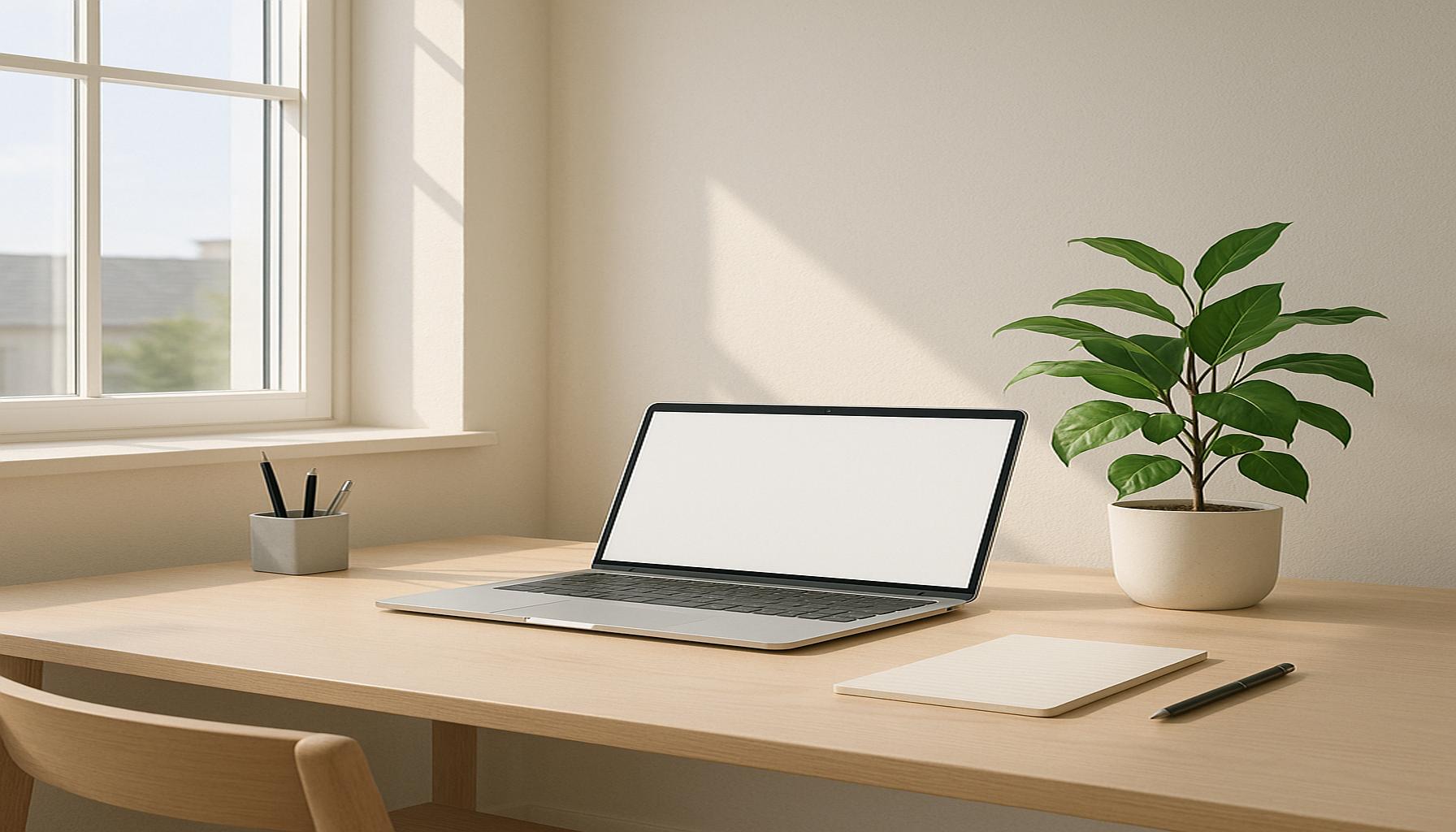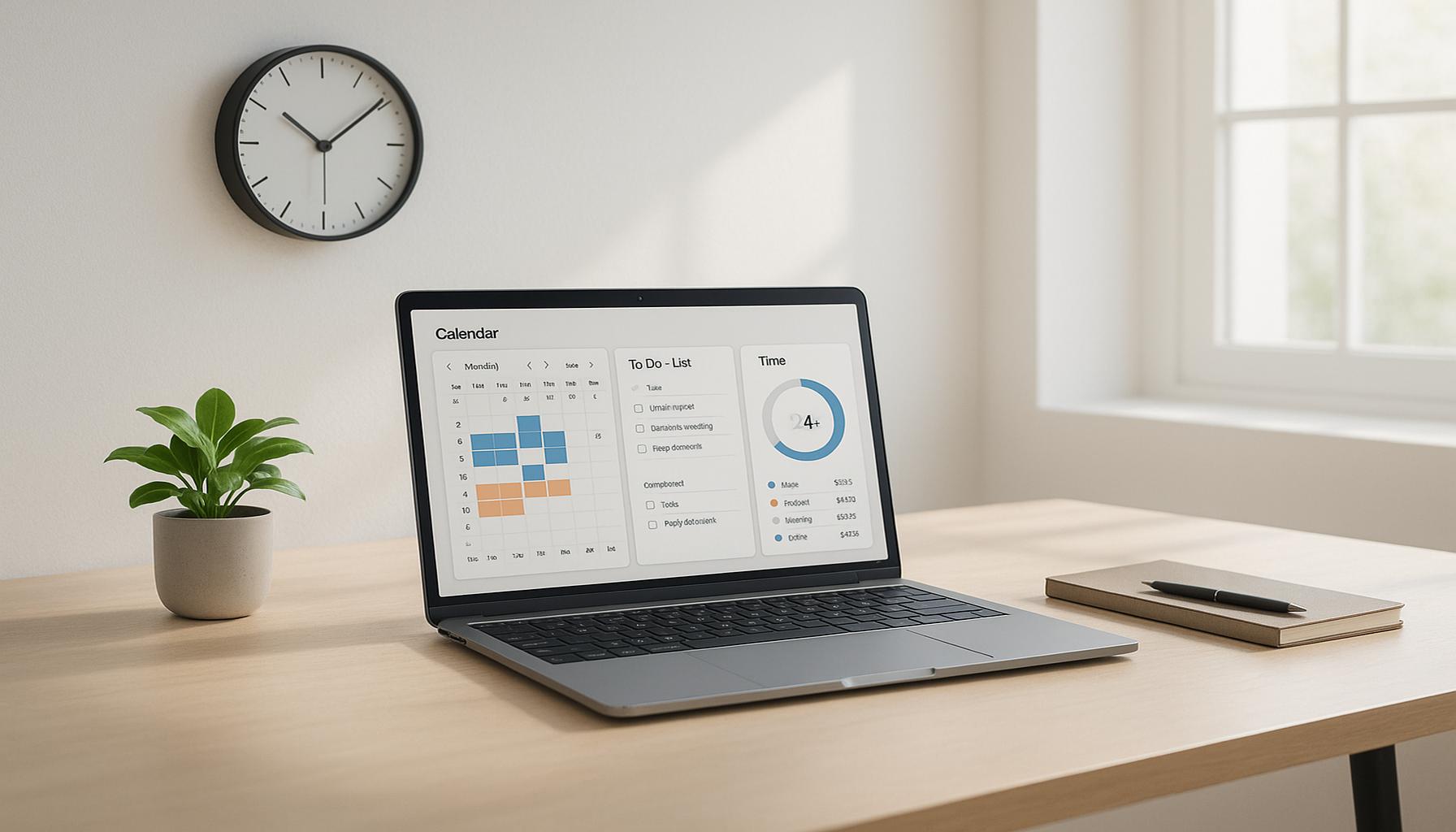Master Minimalist Strategies for an Efficient Workspace Organization
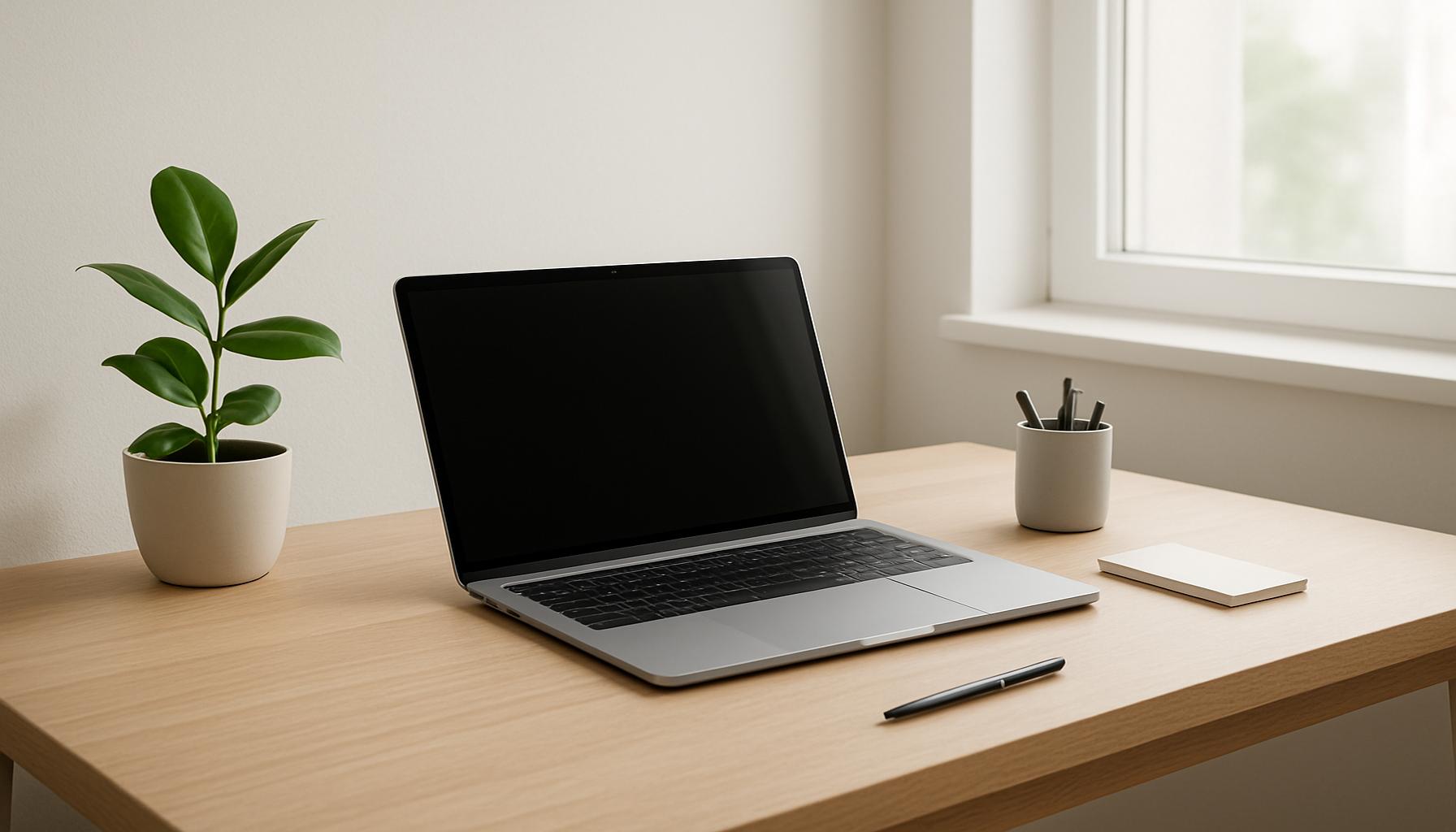
The modern world often bombards us with clutter, both physically and mentally, making effective organization a challenging yet crucial task. Embracing minimalism can not only clear up your workspace but can also lead to a more focused and productive life. By simplifying our environments, we can cultivate an atmosphere that fosters creativity and efficiency.
With the ongoing rise in remote work and the increasing significance of personal well-being, understanding how to implement minimalist strategies is more relevant than ever. This approach advocates for quality over quantity, urging us to declutter our desks and minds in order to achieve a functional and inspiring workspace. Notably, the environmental impact and psychological benefits of minimalism also resonate deeply in today’s fast-paced society.
In this article, we will explore the Top 5 minimalist strategies for efficient workspace organization that can transform your work life. Each strategy will provide practical advice aimed at simplifying your environment while enhancing productivity, showcasing proven methods that anyone can adopt.
Descomplicando a Vida: Top 5 Estratégias Minimalistas para uma Organização Eficiente do Espaço de Trabalho
In our fast-paced world, where distractions are abundant and time is precious, simplicity and organization have transcended being mere trends—they have become essential strategies for enhancing productivity and maintaining mental clarity. The pursuit of a minimalist lifestyle invites individuals to declutter their lives, both physically and mentally. It encourages the creation of spaces that nurture creativity while promoting efficient work habits. In this comprehensive guide, we delve into the top five strategies for adopting minimalism within your workspace, setting the stage for an optimized environment conducive to high productivity and creative thinking.
5. Embrace the Power of Digital Tools
The digital revolution has redefined the way we work, offering tools that simplify and streamline our tasks. One of the quintessential strategies for a minimalist workspace is to leverage these digital tools extensively. By migrating from physical to digital formats, you significantly reduce clutter and enhance productivity.
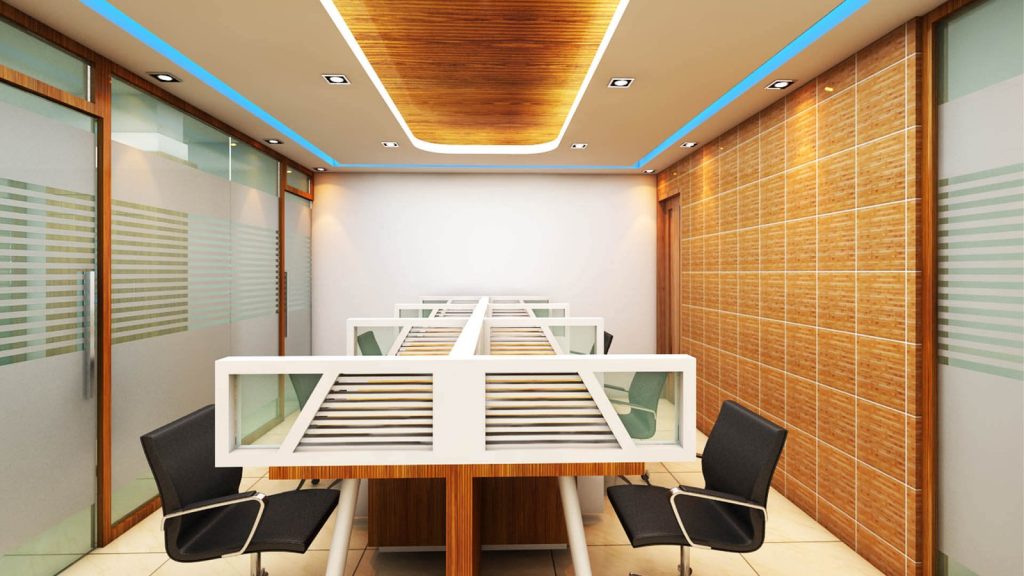
- Use cloud storage: Services like Google Drive, Dropbox, and OneDrive provide secure and accessible storage solutions. These platforms allow you to store important documents and files digitally, eliminating the need for paper copies. This not only frees up desk space but also ensures that your files are organized and easy to access from any device at any time.
- Implement to-do apps: Applications such as Todoist and Trello serve as powerful task management tools. They help organize your daily tasks and long-term projects without the need for physical sticky notes or paper planners. These apps offer features such as reminders and collaborative boards, which enhance task management efficiency.
- Utilize communication tools: Transitioning to tools like Slack or Microsoft Teams can significantly streamline communication. These platforms consolidate conversations and file sharing, reducing the clutter of email chains and physical memos.
By integrating digital solutions into your workspace, you consolidate everything onto a manageable screen, thereby reducing physical clutter and fostering a more organized and efficient setup.
4. Create Defined Zones
Organizing your workspace into defined zones is a powerful technique to boost focus and productivity. A cluttered desk often equates to a cluttered mind, but by strategically segmenting your workspace, you can maintain clarity and enhance productivity.
- Work Zone: This is where primary tasks are performed. It should be equipped with the essential tools and equipment you use regularly, minimizing distractions.
- Creativity Zone: Allocate a small space dedicated to brainstorming and creative pursuits. Inspirational items, such as art or plants, can be utilized to cultivate a creative atmosphere.
- Relaxation Zone: Incorporate a comfortable seating area or even just a plant to create a space where you can unwind briefly. Short breaks in this area can replenish your focus and reduce stress.
By clearly defining zones, you promote a balanced workflow, maintain organization, and enhance focus, leading to reduced stress and increased overall productivity.
3. Get Rid of the Unnecessary
At the heart of minimalism lies the principle of “less is more.” Regular decluttering of your workspace can dramatically improve mental clarity and organization. The process involves identifying and removing items that are not essential to your work or that do not provide satisfaction or utility.
Consider these questions to guide your decluttering journey:
- Do I use it regularly? Assess whether each item is frequently used. Items that have not been touched in months might be non-essential and could be stored away or discarded.
- Does it bring me joy? This question, popularized by the KonMari method, helps you evaluate items based on emotional and functional criteria. If something no longer serves its purpose or brings you pleasure, it may be time to let it go.
- Is it essential for my work? Items critical to your daily operations should be readily accessible, whereas non-essential items can inhabit less priority space or be eliminated.
By confronting these questions, you’ll likely discover many items that can be cleared from your workspace, leading to a minimalist environment that elevates productivity and inspires creative thought.
2. Streamline Your Supplies
Excess materials and supplies can lead to a chaotic environment, derailing your focus. Adopting a minimalist approach involves narrowing down your supplies to those that are truly indispensable for your tasks.
- Limit office supplies: Avoid excess by keeping only the essential pens, papers, and folders that you use frequently. This reduces waste and opens up space on your desk.
- Organize with minimalism in mind: Use drawer organizers to sort and store items neatly. Keep only the necessary supplies visible and within reach to maintain a tidy and organized workspace.
- Regularly assess your inventory: Monthly reviews of your supplies ensure that you maintain a lean, well-organized workspace. This practice helps in promptly identifying and removing items that are no longer needed.
By streamlining your resources, you eliminate potential distractions, creating a more conducive environment for efficient work practices.
1. Cultivate Mindfulness in Your Workspace
Mindfulness at work is about being intentional with the items in your workspace and how you use them. A mindful approach facilitates a deeper appreciation for simplicity and efficient organization.
Here are some practices to foster mindfulness in your workspace:
- Start with an intention: Begin each day by setting aside time to determine your objectives and ensure your workspace aligns with these goals. This practice helps create a focused atmosphere.
- Practice gratitude: Reflect on the tools and items in your workspace that enable your work. By acknowledging their support, you cultivate appreciation and reduce the urge to accumulate unnecessary goods.
- Regular reflection: Allocate time to periodically analyze your workspace, determining what is working and what needs modification. This reflection helps maintain a space that is consistently conducive to productivity.
A mindful workspace is a minimalist one, intentional in its simplicity and organization, promoting productivity, creativity, and a sense of well-being.
In conclusion, applying these minimalist strategies can greatly enhance the functionality of your workspace, ultimately boosting your productivity and encouraging clearer thought processes. In embracing minimalism, you not only declutter your work environment but also simplify your life, creating room for what truly matters.
In the quest for an organized and efficient workspace, adopting minimalistic strategies can notably enhance productivity and mental clarity. Minimalism in workspace organization not only addresses the physical clutter but also facilitates a more focused approach to work. Explore several essential categories that embody the advantages of minimalistic strategies in workplace organization.
| Category | Key Features | Advantages | Disadvantages | Best Beneficiaries |
|---|---|---|---|---|
| Space Optimization | Utilizing vertical storage and multi-functional furniture. | Maximizes available space, creating a less cramped environment. | Initial costs may be higher for quality multi-functional items. | Professionals in small offices or remote workers. |
| Decluttering | Regularly assessing items and eliminating unnecessary possessions. | Improves focus by reducing distractions. | Sentimental attachment to items can make it challenging. | Individuals seeking mental clarity in their workspace. |
| Digital Minimalism | Organizing digital files and reducing digital clutter. | Enhances efficiency in accessing critical documents swiftly. | Can lead to temporary disruptions while reorganizing. | Tech-dependent workers, such as graphic designers or writers. |
| Mindfulness Practices | Incorporating meditation or short breaks into the workday. | Promotes mental well-being and decreases burnout rates. | May be difficult to integrate into a busy schedule. | Anyone feeling overwhelmed by their workload. |
Embracing these strategies offers a holistic approach to workspace organization that transcends mere aesthetics. Through space optimization, decluttering, digital minimalism, and mindfulness practices, a workspace can transform into a sanctuary that inspires creativity and efficiency. Investigating and implementing these strategies could lead to lasting improvements in one’s work life, enhancing not only productivity but overall well-being.
Frequently Asked Questions
What are minimalist strategies for organizing a workspace?
Minimalist strategies focus on simplifying and optimizing your workspace by reducing clutter and enhancing functionality. This involves keeping only essential items within your work area, which can significantly improve focus and productivity. By embracing the principle of “less is more,” you can create a more serene and efficient work environment. Consider using storage solutions that both de-clutter and complement the minimalist aesthetic, fostering an atmosphere of calm and efficiency.
How does a minimalist workspace impact productivity?
A minimalist workspace can have a profound impact on productivity by minimizing distractions and allowing for greater concentration. When your surroundings are free from unnecessary items, your mind is less likely to wander and more likely to focus on the task at hand. Additionally, a tidy and well-organized environment can reduce stress and decision fatigue. Discipline in maintaining a minimalist workspace can amplify these benefits, potentially leading to improved mental clarity and work outcomes.
What are some common challenges when implementing a minimalist workspace, and how can they be overcome?
One of the common challenges in implementing a minimalist workspace is the attachment to items that hold sentimental value or the habit of accumulating unnecessary things. Overcoming these challenges requires a shift in mindset and a commitment to prioritizing function over form. Consider setting clear criteria for what stays and what goes based on utility and frequency of use. Addressing sentimental items may be difficult, but setting boundaries on the number of keepsakes can keep your workspace functional and organized.
Can a minimalist workspace be personalized?
Absolutely, a minimalist workspace can still reflect personal style and preferences without compromising on its primary focus on simplicity and functionality. Personalization can be achieved through the selective use of color, art, or carefully chosen decorations that do not add clutter. The key is to balance personal elements with minimalism by ensuring they enhance, rather than distract from, the workspace’s purpose. Integrating items that inspire or have functional value can add a personal touch without encroaching on the minimalist ethos.
Conclusion
Incorporating minimalist strategies into your workspace organization presents a remarkable opportunity to streamline your daily routine, enhance productivity, and foster a more peaceful work environment. By focusing on the essential, we allow our workspaces to breathe, increasing both functionality and aesthetic appeal.
The article discussed five core strategies that can be pivotal in transforming your workspace. Firstly, decluttering and removing non-essential items sets the foundation for minimalist work habits. Secondly, emphasizing simplicity in design and functionality prevents distractions, guiding focus toward meaningful tasks. The third strategy involves creating clear zones for work tasks, thereby optimizing efficiency and flow.
Furthermore, the strategic use of technology plays a crucial role in minimizing physical clutter while facilitating better organization. Lastly, installing a habit of regular reflection and reassessment ensures that the workspace evolves with your personal and professional needs.
These strategies not only contribute to a more organized workspace but also align with the broader principles of minimalism, advocating for a life with more purpose and less unnecessary baggage. As personal satisfaction links closely with productivity, the importance of a well-organized workspace becomes undeniable.
Understanding and implementing these strategies can nurture a healthier relationship with your workspace. By investing time in creating an environment that reflects minimalist values, you’re likely to discover newfound clarity and inspiration in your professional endeavors. As minimalist approaches continue to gain traction, the journey towards a simplified workspace holds exciting potential for personal growth and efficiency.
